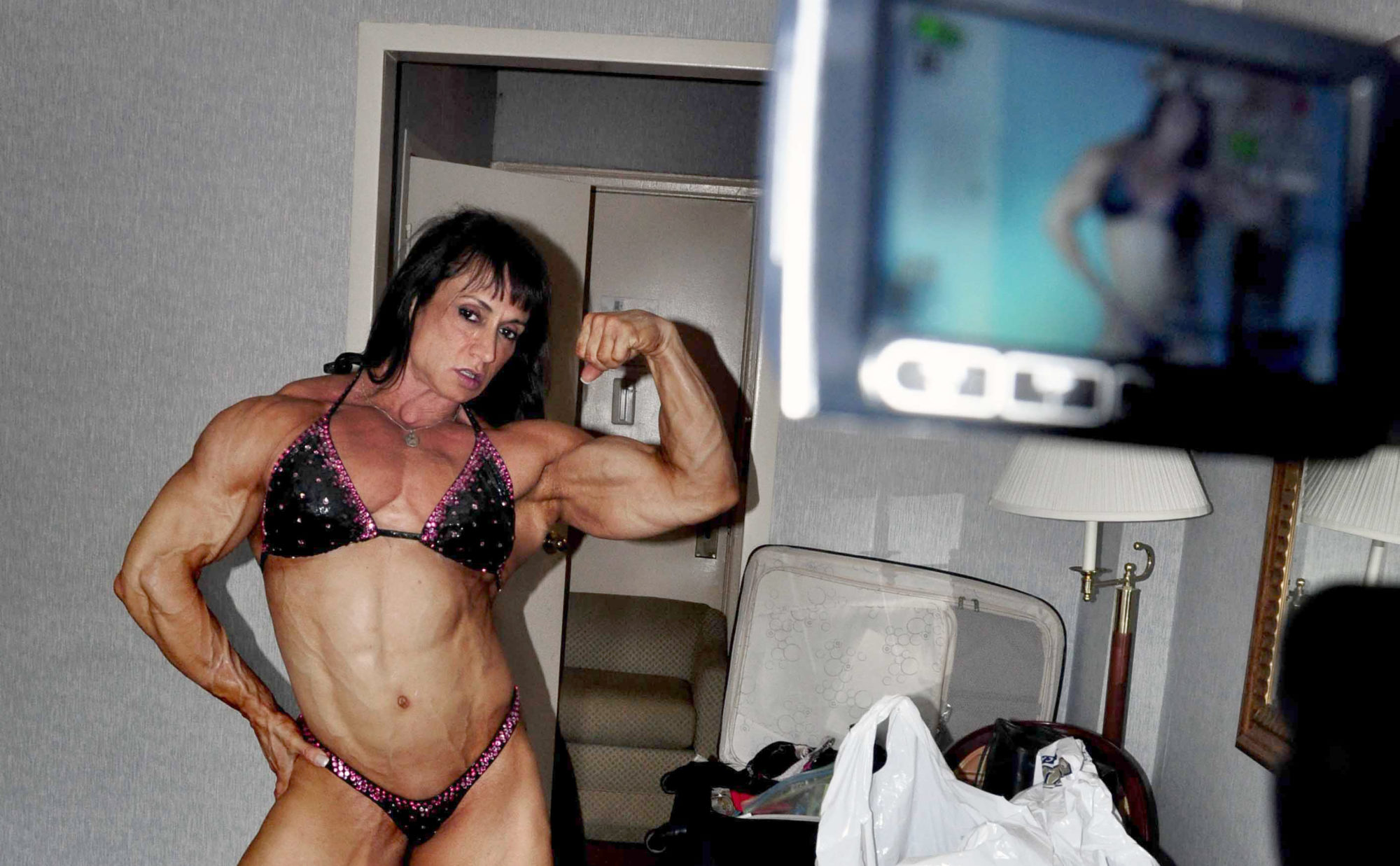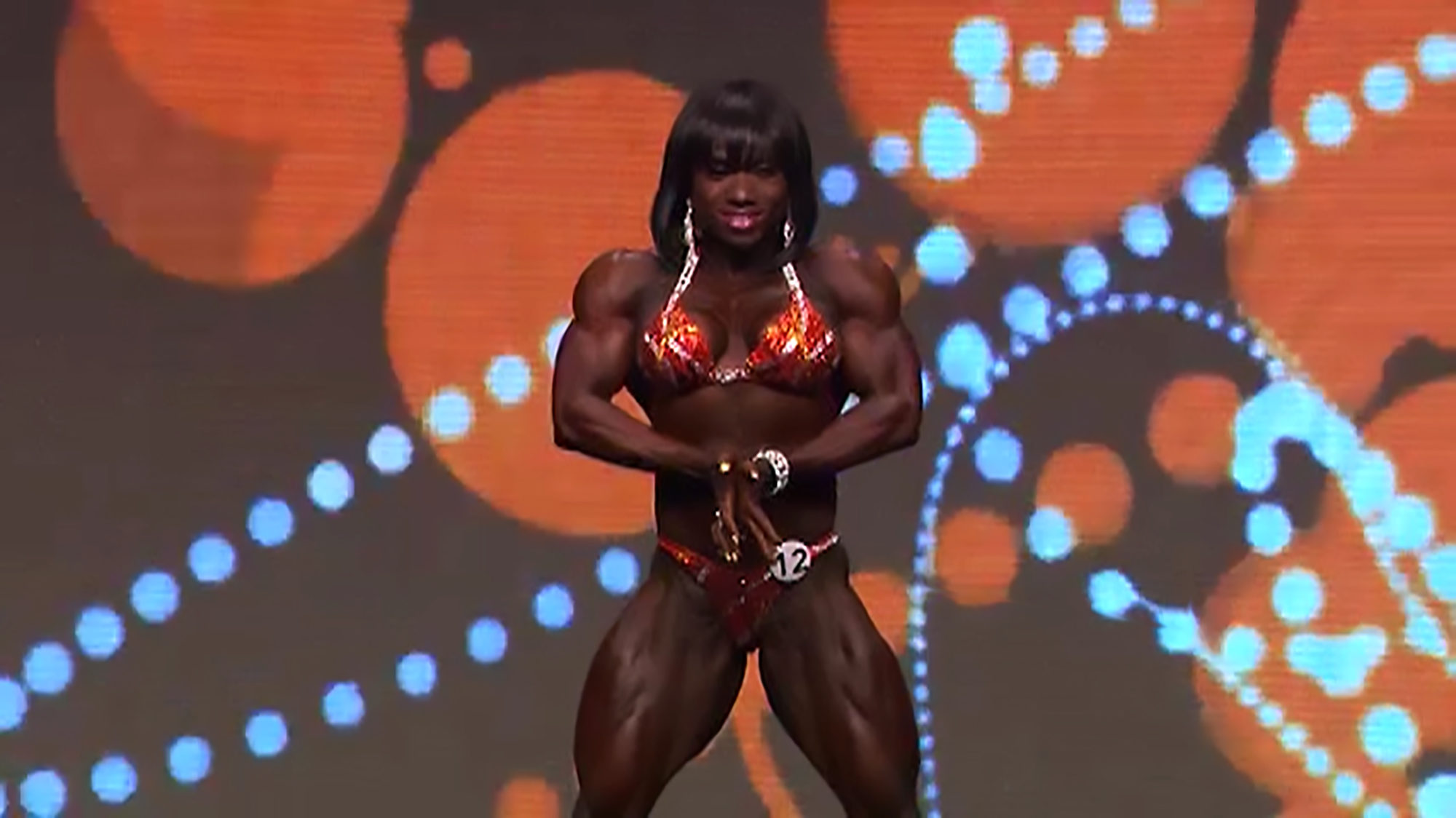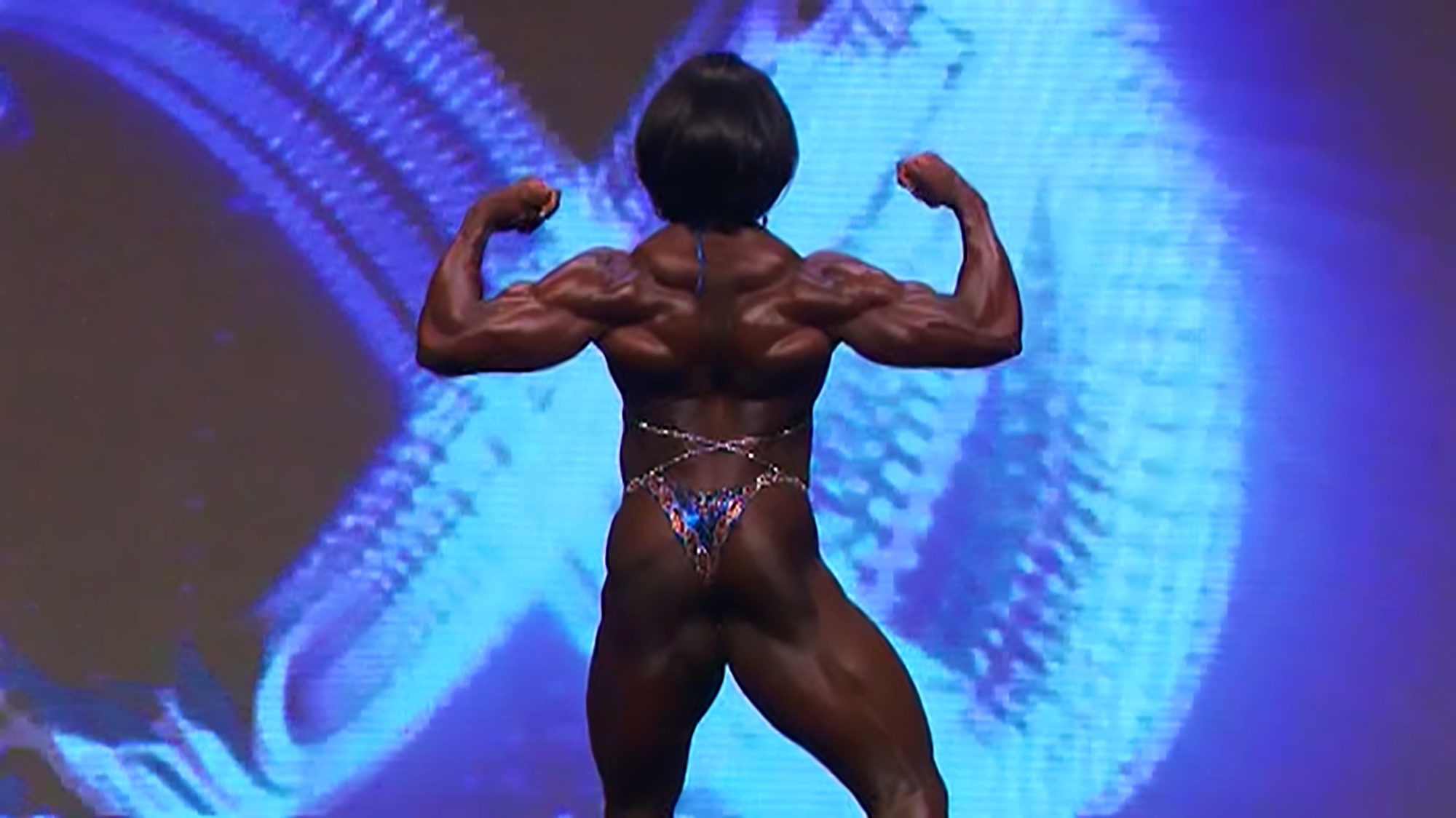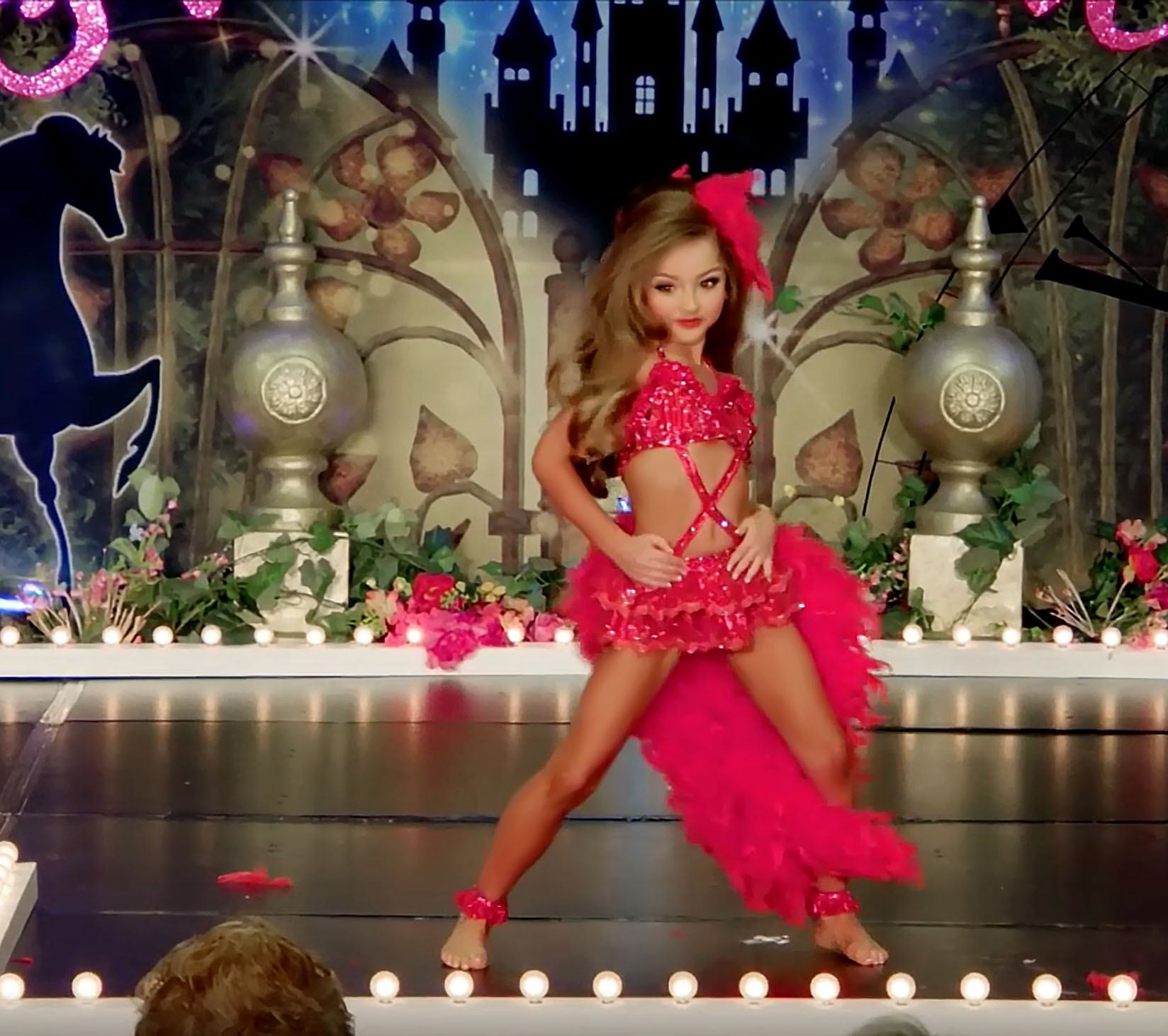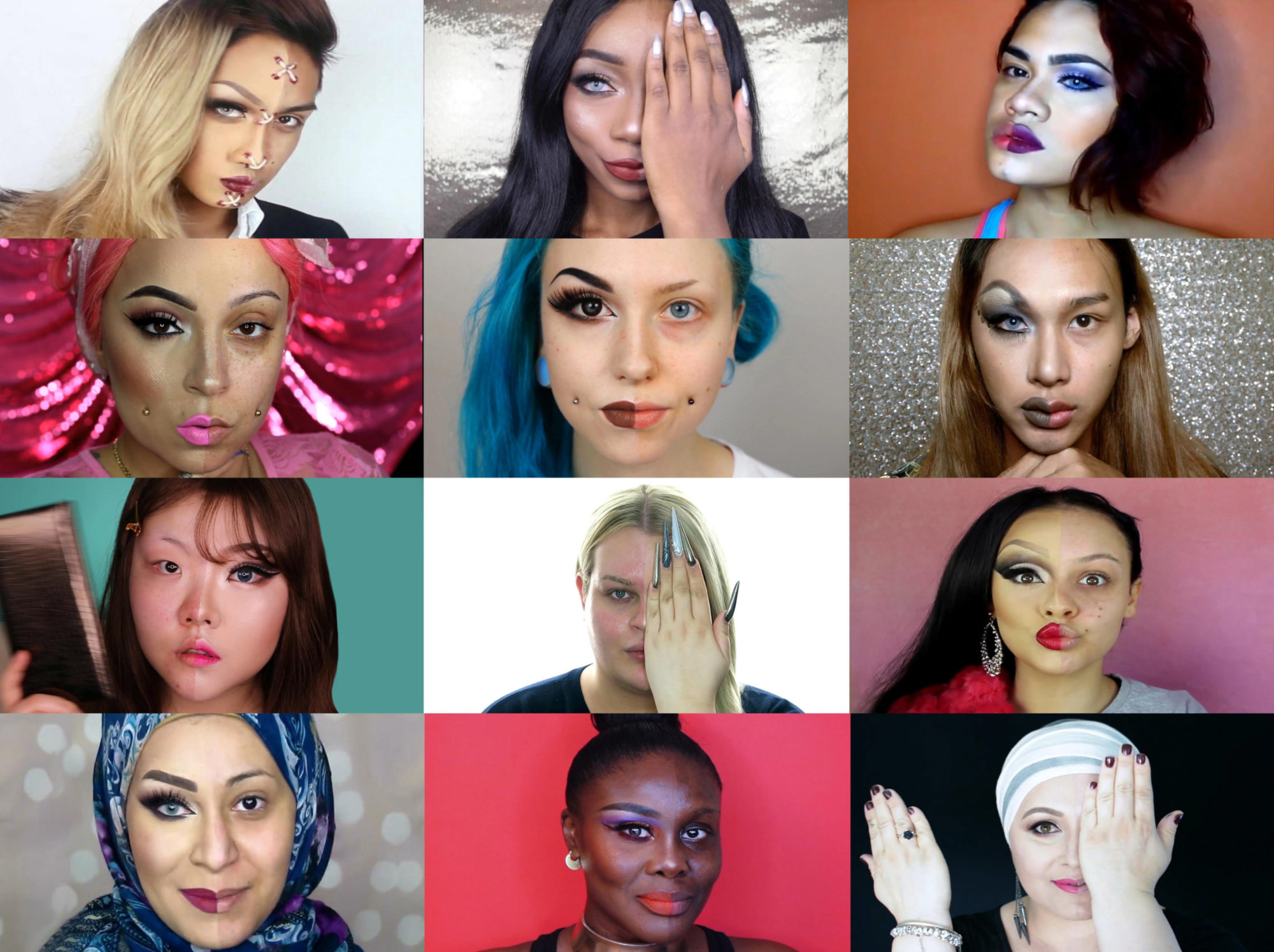Rachel Rampleman: Oh! You Pretty Things
Rachel Rampleman, LACTIC Incorporated, Times Square (Belle Darling), (still), 2016 [courtesy of artist and Weston Art Gallery, Cincinnati]
Share:
On the day I visited Weston Art Gallery in Cincinnati, OH, to see Rachel Rampleman’s mid-career survey, Oh! You Pretty Things, news came that Caster Semenya, a South African runner and Olympic gold medalist, would be barred from competing in certain races by the International Association of Athletics Federations (IAAF) because her body naturally produces a high level of testosterone, and that she would be forced to suppress the hormone through medical means to continue in her sport, a decision which has since been, at least temporarily, suspended. As I’m writing this, Alabama has become the latest in a rash of states in the US to pass measures that, if put into effect, would make it nearly impossible to gain access to an abortion or perform one within its jurisdiction. Between then and now, the “Camp” themed Met Gala—which, if nothing else, encouraged some to read or reread Susan Sontag’s seminal essay on the topic—took place.
It has been instructive to confront events that reinforce the state and society’s imposition on the bodies and minds of women and femmes while stewing over the work in this exhibition. In nearly all of her video works on view, Rampleman studies women, girls, and others who perform femininity in one way or another. All her subjects take their gender performances to extremes, either by exaggerating traits generally associated with femininity, sometimes to the point of being absurd, or by presenting themselves directly in conflict with those traits to similar effect. Many of the subjects, regardless of whether their presentation is conscious as such, read as campy in their hewing to exaggeration, artifice, and stylization and their joyful disregard of the borders that attempt to contain them. Rampleman’s editing of the source material—she often cuts video into short, gif-like, repeating loops—further emphasizes the gender performances in which her subjects engage.
Rachel Rampleman, Bodybuilder Protrait (Tazzie Colomb), 2011 [courtesy of artist and Weston Art Gallery, Cincinnati]
Take for example Bodybuilder Portrait (Tazzie Colomb). On the left side of the two-channel video, Colomb, a veteran female bodybuilder who is active on the professional circuit, speaks about the difficulties and rewards of her extreme lifestyle. She cautions young women who might consider competitive bodybuilding against pursuing the sport because of its harmful effects upon her health, while maintaining that her extraordinary size and strength allow her to feel safe and capable, especially in public. She expresses frustration that she draws positive and negative attention wherever she goes, and she dispels the myth that men aren’t attracted to muscular women. In the right channel of the video, she silently works her way through a choreographed set of competition poses while wearing a bedazzled string bikini. The multichannel Bodybuilder Vignettes (Bodybuilder Series) offers further insight into the aesthetic performance of bodybuilding competitions. All nine competitors featured in the video are oiled up and outfitted in bikinis similar to the one Colomb wears in Bodybuilder Portrait. Each also wears heavy, dramatic makeup and long false fingernails. Many are spray-tanned to a deep orange. Contrary to Bodybuilder Portrait , the vignettes—many of which have the camera trained on the subjects’ backs—show Rampleman’s subjects repeatedly performing isolated movements meant to showcase different muscle groups. The performers, abstracted through repetition, become disembodied, boiled-down signifiers of the sport in which they compete.
Rachel Rampleman, Bodybuilder Vignette 05, (still), 2016 [courtesy of artist and Weston Art Gallery, Cincinnati]
Rachel Rampleman, Bodybuilder Vignette 02, (still), 2016 [courtesy of artist and Weston Art Gallery, Cincinnati]
Sexy Baby Studies (Sexy Baby Series) and Red Room Studies (Burlesque Dancer Series) explore other instances of performed femininity. Sexy Baby Studies is a dizzying 28-channel video installation that shows wildly outfitted young girls made up to look remarkably like adult women for child beauty pageants. In the looped video fragments they dance, walk, and occasionally throw tantrums. Red Room Studies compiles snippets of burlesque routines filmed over the course of four years at The Slipper Room in New York. The performers enact similar gestures, without the tantrums. Both pieces put performances of hyperfemininity on display, but to different ends. Sexy Baby Studies documents a cultural phenomenon that Bruce LaBruce might categorize in his Notes on Camp/Anti-Camp manifesto as Conservative Camp. Beauty Pageants in general, and especially ones for young girls, use performance of gender to reinforce expectations of women already entrenched in Western society—specifically that women and girls should be simultaneously attractive and virginal. Burlesque, on the other hand, frequently maintains a hyperfeminine aesthetic while allowing performers to claim agency over their bodies and sexuality. Burlesque performers choose what, when, and how much of their clothing they remove.
Rachel Rampleman, Sexy Baby Study 09, (still), 2018 [courtesy of artist and Weston Art Gallery, Cincinnati]
In Rampleman’s Female Masking Studies (Female Maskers Series), a nine-channel video installation, the artist collects videos from YouTube of female maskers, a subculture made up primarily of cisgendered heterosexual men who wear full-body latex suits to make themselves resemble female dolls or mannequins. Most participants in the subculture see this masking as a safe, semi-private way to access their femininity. There are also numerous works made from found YouTube videos that explore the wildly popular phenomenon of online makeup tutorials. Not unlike videos posted by female maskers, many of the more inventive makeup looks are meant not for public, everyday wear but for an audience on the other side of a phone or computer screen. In Faceless Portrait (Makeup Artist Series) the performer applies a skin-tone mask to flatten and erase her features, creating a smooth beige surface where her nose, mouth, and eyes should appear, interrupted only by two small slits, one for breathing and one for seeing. A related work, The Power of Makeup 2.0 (Makeup Artists Series) shows 12 YouTube makeup artists, each with half the face made up and the other half left bare, a gesture that reinforces how even the aesthetic choices we make for daily wear are performative in nature.
Rampleman’s work in Oh! You Pretty Things provides us an expansive view of individuals and subcultures that push at the borders of womanhood and, more broadly, of gender. Collectively, these video portraits force into focus the absurdity of gender expectations while also proposing that they can be employed, to great effect, as a tool for exploration and play.
Rachel Rampleman, The Power of Makeup 2.0, (composite image of video stills), 2017 [courtesy of artist and Weston Art Gallery, Cincinnati]
Paul Michael Brown is a writer and curator based in Lexington, KY. He currently serves as the Director of Institute 193, also based in Lexington.
